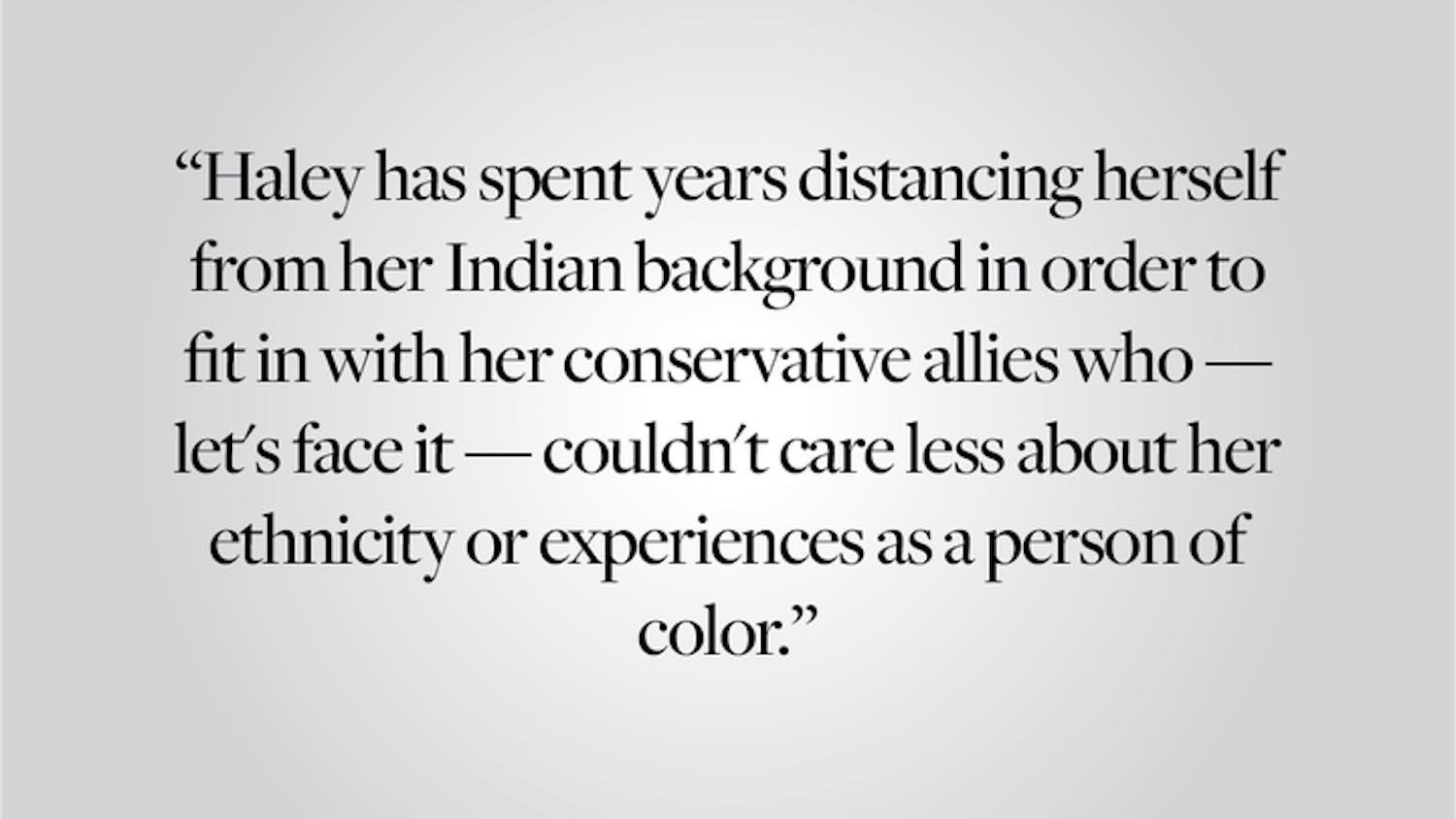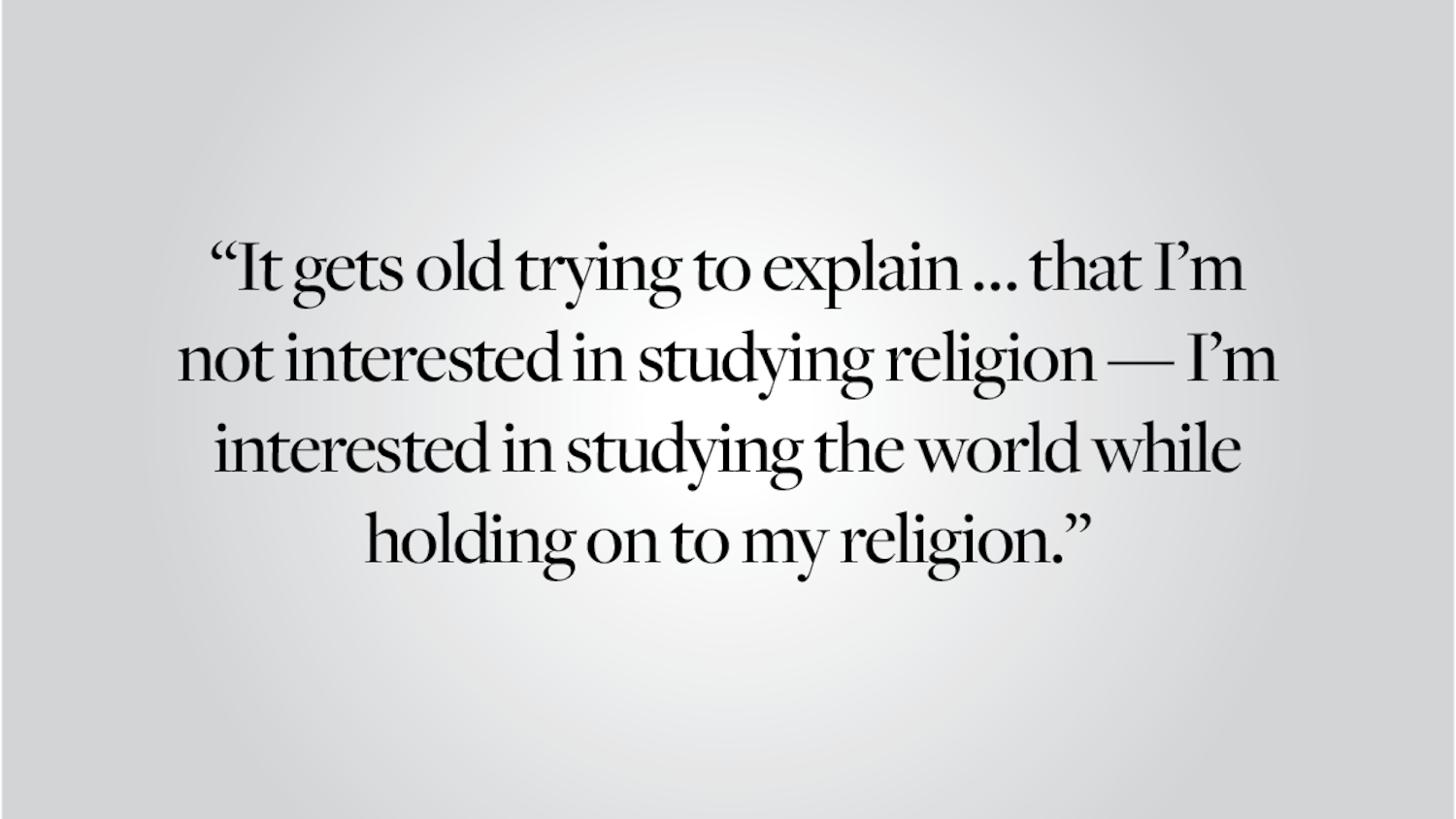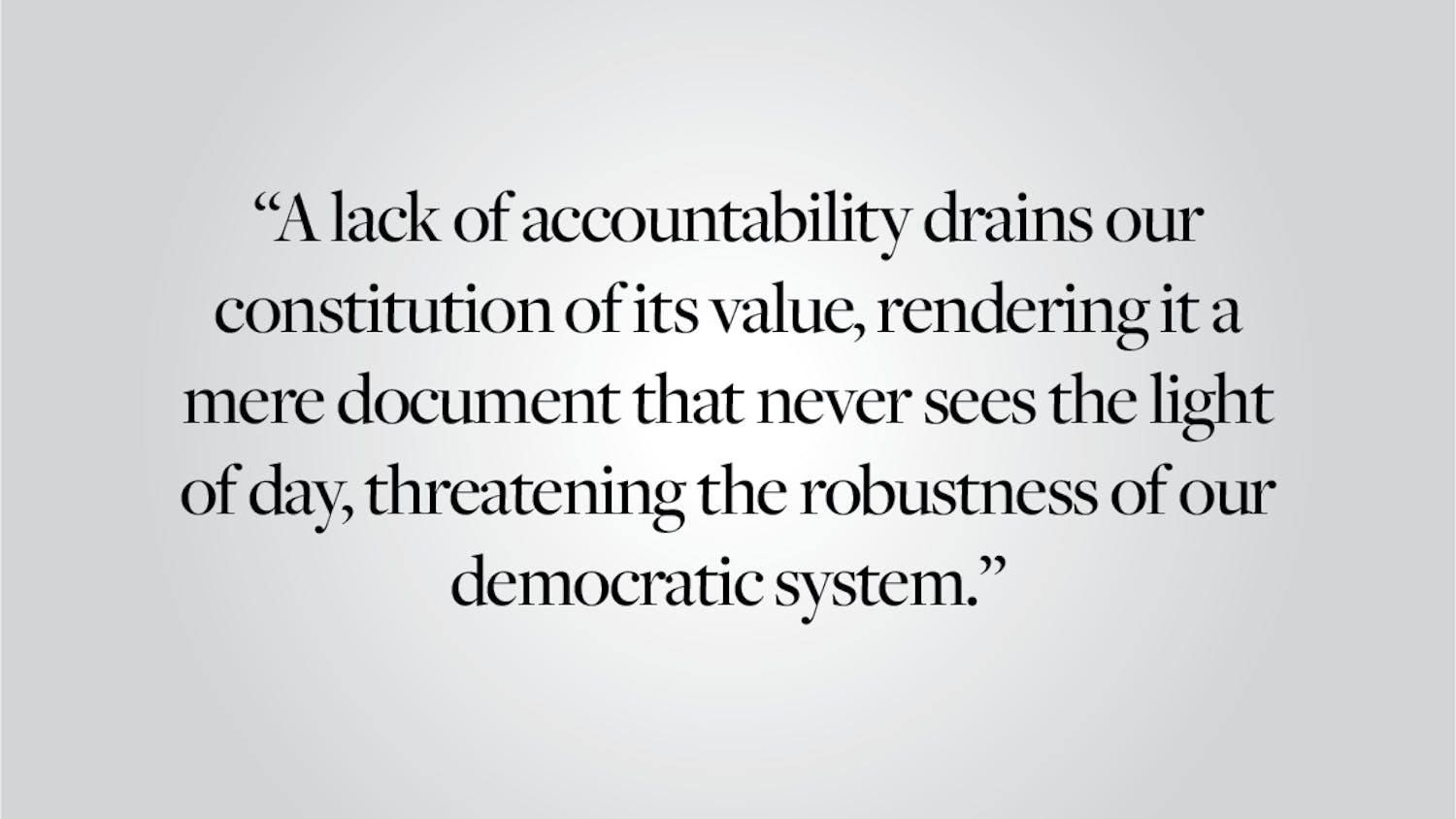The antiquated concept of the classroom, as it exists today in the minds of many educators and students, actively undermines the goals of higher education. Defining or giving purpose to the concept of a classroom is a seemingly easy task. Simply understood, the classroom is a space for a teacher to instruct and for students to learn what they are presented. To some extent this is partially true, but the classroom is a much more complicated space than just that.
To fully understand what a classroom has the potential to be, the accepted concept of the space itself and its currently associated uses must be separated from that of the stereotypical room with desks. The classical and rigid theoretical construction of the classroom does not provide enough intellectual and even emotional space for both students and educators to bring their historical, epistemological and relevant experiences into the learning environment. To allow outdated understandings of the classroom to limit these crucial aspects of a holistic educational experience is to limit the minds of the students inside it.
I found the more rigid understanding of the classroom to be the environment in a course I enrolled in at the beginning of the spring semester, SOC1330: “Remaking the City,” taught by the renowned sociologist John Logan, author of “Urban Fortunes.” In the second week of class, Logan assigned the chapter “Sex Codes and Family Life among Northton’s Youth,” from Elijah Anderson’s book “Streetwise,” published in 1990. Anderson is a professor of sociology at Yale. The chapter the class was given focuses on the sexual habits of teens in the neighborhood of Northton, Philadelphia. I found the work to perpetuate racist and sexist thought in its representation of black youths and women in this inner-city space. On the second page of the chapter, Anderson wrote: “In each sexual encounter, there is generally a winner and a loser. The girls have a dream, the boys a desire. The girls dream of being carried off by Prince Charming who will love them, provide for them, and give them a family. The boys often desire sex without commitment or babies without responsibility for them.”
This specific excerpt struck me as problematic. First, Anderson’s language makes no specific reference to what he considers his ethnographic research — the methods of which I will come to question later. Rather it insinuates that these are the dreams and desires of all “inner-city youths” as he distinguishes in an earlier paragraph, a gross and racist generalization.
But to portray inner-city boys as hypersexual and girls of color as lazy and incompetent — images about black men and women that have, respectively, been highly perpetuated in American popular culture — within a scholarly text is unacceptable. This excerpt, while racially and sexually problematic on its own, becomes even more dangerous when put into broader historical context.
Popular American culture — which most often has meant the parts of black culture white people have chosen to popularize — has, since its inception, demonized and oversexualized the black male body and made the black woman look hopeless with no sense of intelligence or agency. Anderson’s words reinforce these negative and hateful stereotypes of young black men and women who live in inner-city neighborhoods. The very existence of the text itself perpetuates these ideas and goes directly against civil rights work that strives to combat these stereotypical images. But to make matters worse, Logan presented this to students without providing proper historical and social context beforehand, making the writing even more dangerous.
Logan assigned this text to his class without a word of advice about examining the text through a historical lens or even a preface that the text may be difficult to read for some students. Instead, he offered this reading — with its racist, sexist and generalized statements — to a class of 30 or so students whom he could not guarantee would look at it within the necessary historical and systematic framework. Because professors are given the role of educating and being an authority, they hold power in the classroom. With that power, it is their responsibility to combat systematic discrimination inside their classrooms before hateful ideas in the texts they may assign have the opportunity to take hold inside the minds of their students. By not prefacing this reading, Professor Logan — because of his position of power as a professor — legitimized this text and gave a platform for students that may harbor sexist or racist thoughts (knowingly or subconsciously) to have these hateful ideas reaffirmed not just by the reading but also by his passive participation in systematic racism and sexism.
I raised this issue with Logan twice when the class next met. The first time, Logan dodged my direct critique of him and analyzed the text instead. The second time I questioned his decision not to preface the material, I was told that I was “entitled to my opinion.” Feeling that Logan had effectively written off my argument of systemic racism and sexism as an insignificant opinion, I left class immediately and did not return. In an email sent shortly after the full class let out, Professor Logan told me that “on close reading I don’t agree that (the text) can be considered racist.”
Professor Logan contacted Professor Anderson about our class discussion and invited him to attend our next meeting to discuss his piece. In preparation for this visit Professor Anderson asked that we read his piece “The White Space,” published in 2015.
During the lecture, Professor Anderson made surprising and troubling statements, like one where he implied that blacks entering predominantly white spaces were physically dirty before making their entrance by saying: “How do you deal with that deficit of credibility as you navigate the white space? One of the ways you deal with it is by working to disabuse people of the idea that the ghetto stereotypes do not apply to me. You wear a tie, you clean your fingernails, put on deodorant.” This comment, along with many others — like one where he insinuated that “decent white folks” marry black people — made for a difficult and hostile class environment. But beyond these racist comments, I questioned Anderson on his writing and practices and their validity as legitimate representation of ethnographic research. His response was that he joined a “black social club,” a “quasi secret society” as he called it, that gathered once a month, a time frame that, to me, seems insufficient for the generalized comments he makes on middle-class black families in predominantly white environments. He said this is where he focused his ethnographic research for “The White Space.”
In the chapter “Sex Codes” from Anderson’s “Streetwise” I was taken aback by this statement: “Sexual relations, exploitative and otherwise, are common among middle-class teenagers as well, but most middle-class youths take a stronger interest in their future and know what a pregnancy can do to derail it.” When I pressed Professor Anderson on this quote, he said that middle-class families had “a lot more to lose,” a statement completely discrediting the relative realities that the two groups have and, in doing so, prioritizing the middle class youths’ lives over those of inner-city youths. While this comment could have been interpreted as the monetary, opportunity or physical loss of possessions middle-class youths could experience from a pregnancy, its ambiguity leaves space for — and almost directly implies — an interpretation that plays into racist perpetuation. After trying to respond to this statement I was cut off by Professor Logan to watch a video clip. This ended my and Professor Anderson’s conversation.
My interactions with both Professors Logan and Anderson shed light on just how crucial it is for people in positions of authority — especially those who work to educate others — to be informed and conscious of the history and reality of the world around them and how the two can affect everything they say and teach in their classrooms. Instilling ideas of hate and discrimination is never positive. Preventing these ideas before they have the opportunity to take shape in the minds of students is a battle that must be fought in every classroom. This, again, brings up the necessity for classrooms to be spaces inclusive of all the experiences and histories that define the inhabitants of the classroom.
To end my critique by only addressing these individual professors would be naive and, in fact, incomplete. Their behavior and demonstrated lack of understanding of crucial concepts calls attention to not just them, but their own institutions of learning. Both men are highly regarded in the sociological field, which deals intimately with the investigation and eventual education around blackness. Sadly, both educators seem to have a very basic misunderstanding of the workings of systematic racism — an idea that both should, without a shadow of a doubt, understand, especially considering their urban-centered research. When examining institutions of higher education, we must ask the question: How it can be that schools award tenure to professors who teach material so crucial to the racial discussion, yet show such low-level understandings of the very mechanisms that drive their field?
To phrase this question differently and put it in the broader context of the classroom: How have these professors’ outmoded conceptions of the classroom and refusal to expand their understandings of the space they have been given been supported and upheld by the school systems they work within? While both Professor Logan’s and Professor Anderson’s actions must be criticized, they are evidence of the larger, more systemic misunderstanding of the classroom within the higher education system itself. Some may argue that bringing issues of race and sexuality into the classroom is an activism not suited for the space. But I say that it is impossible to interpret the space without such understandings. Race and sexuality do not enter the classroom with these conversations but rather precede it and make up the space. They are, in effect, the very fabric of the space itself. Until these systemic problems are recognized as the base of conversation and essential building blocks of the classroom, no learning space will be truly open, inclusive and conducive to higher education for the people it stands to serve.
Kyle Tildon ’19 can be reached at kyle_tildon@brown.edu.
Please send responses to this opinion to letters@browndailyherald.com and other op-eds to opinions@browndailyherald.com.




